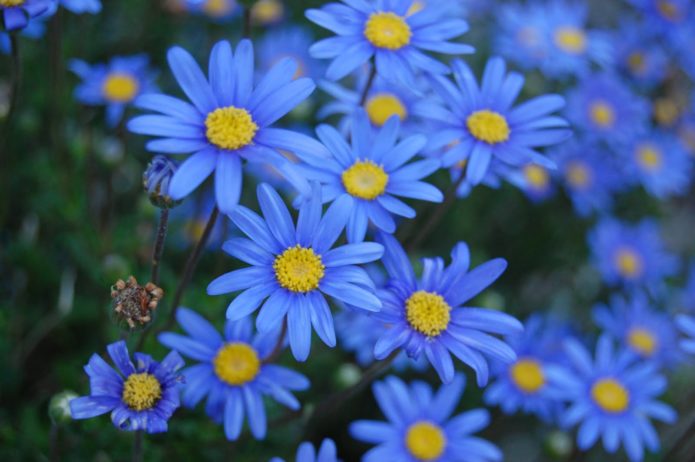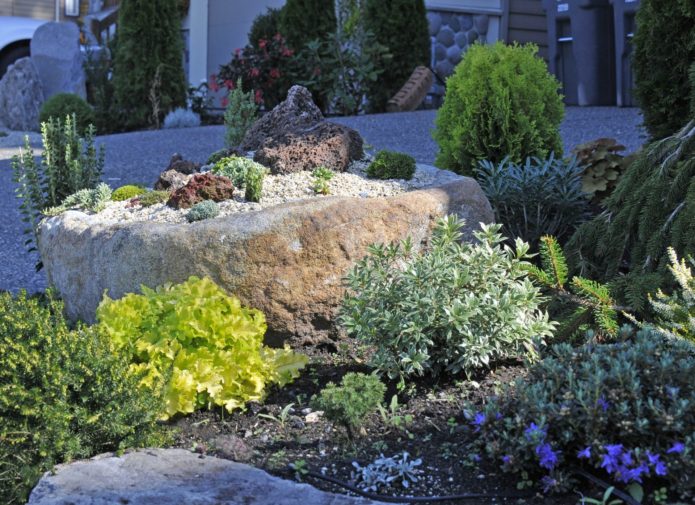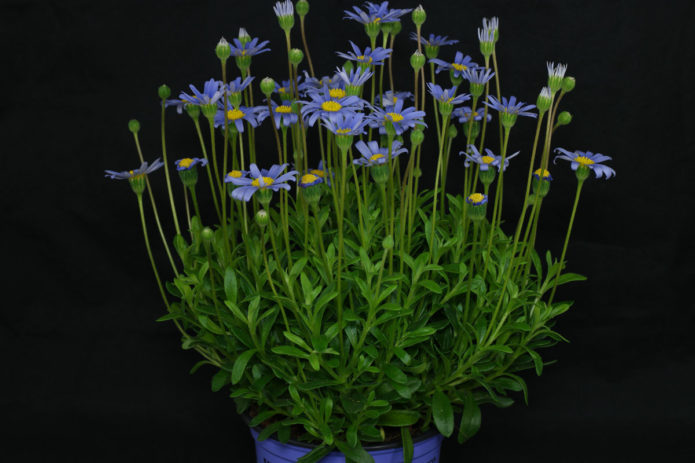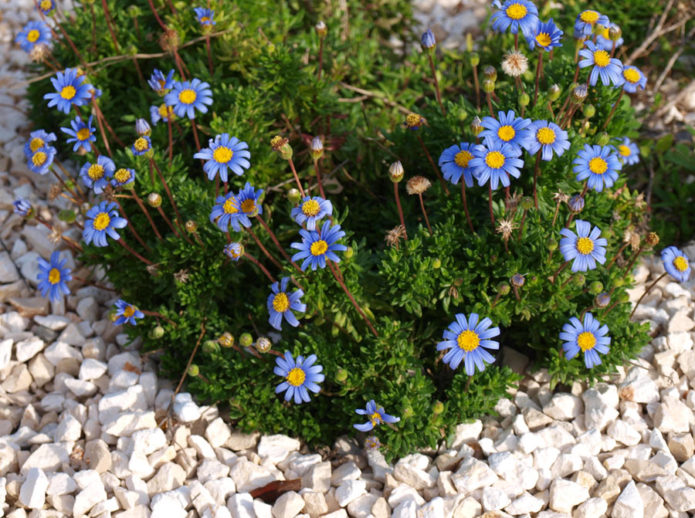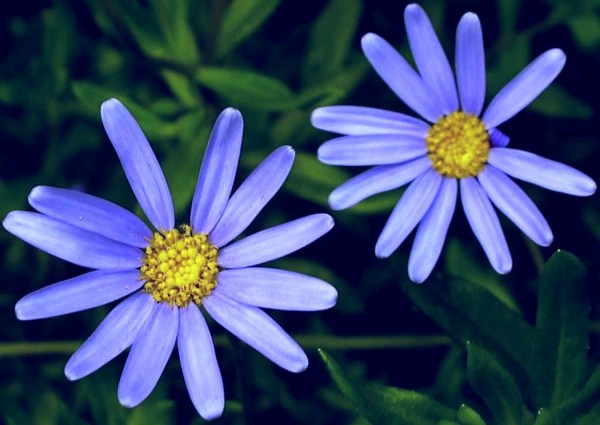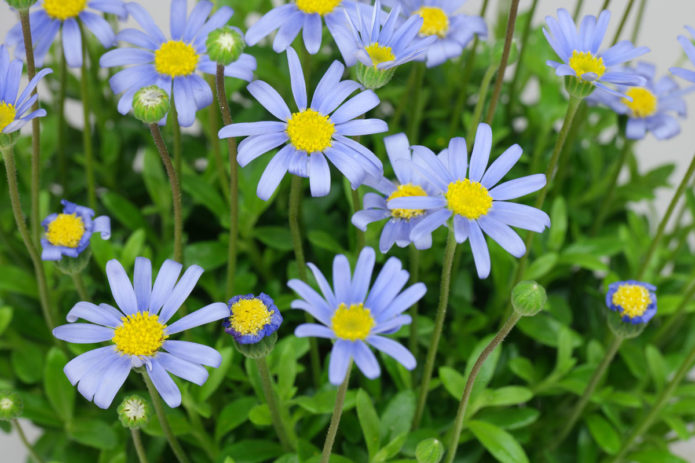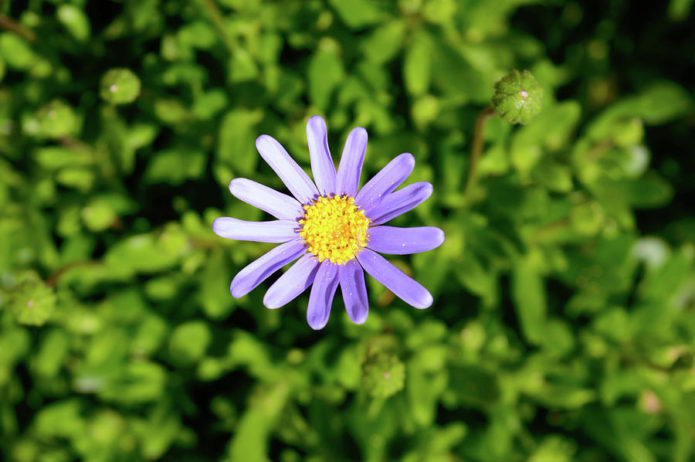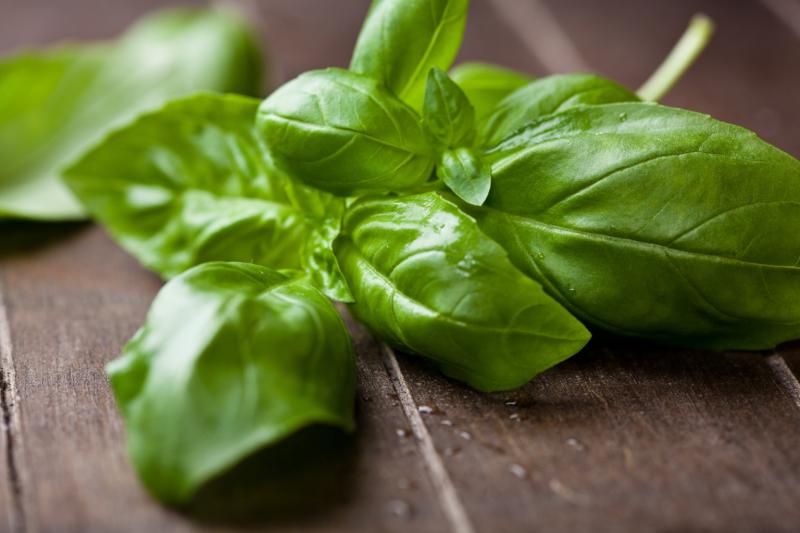Beautiful flowers, which can form the basis of landscape design, do not have to be tall, voluminous and bright. Sometimes unassuming, humble plants can be as pleasing to the eye as sophisticated ornamental crops. These fully include felicia, which we often consider just a kind of traditionally Russian chamomile flower, on the petals of which it is customary to conduct love fortune-telling.
Where and how best to grow felicia
The homeland of felicia is not at all our latitudes. It is believed that she came to us from South Africa, where it grows in large populations. In Russia, this culture is bred as decorative.
Due to the unusual blue hue, this supposedly chamomile is actively used in landscape design:
- the original coloring allows you to use this culture in mixborders - small fenced flower beds, where the combination of different colors leads to the creation of curious compositions;
- often felicia is used as bordering paths as borders;
- usually these flowers are planted with other cultures, contrasting in color and slightly similar: with the same chamomile, calendula or marigolds, violets and bells are suitable, but large and tall flowers such as roses or peonies do not look in such compositions;
- enthusiasts widely use this culture in rock gardens - compositions of stones, among which flowers with blue petals look especially impressive;
- felicia can be planted on a balcony or in an apartment, it grows especially well and looks in pots and any suspended structures;
- they fill large containers in spaces with this peculiar culture, where it is also very original;
- finally, these flowers are also used in floristry, they look great in bouquets.
Popular varieties of felicia with photos
In our country, 2 main varieties of this culture are bred:
- amelloid (amellus-shaped);
- tender.
Amelloid is considered a perennial plant, but in our latitudes it grows only one season, it does not tolerate winter. To preserve the plant, you can transfer it to the winter by cutting it to the root and placing it in a shaded room with a biosubstrate. Can be planted in a flower pot, but also sheltered from the bright sun. The characteristics of the plant are as follows:
- the bush grows up to 60 cm;
- leaves are fleecy, with a greenish-bluish tint;
- inflorescences are in the shape of a turquoise basket;
- flowering is very intense.
Felicia Berger (she is also called tender) is much lower - above 20 cm, almost never stretches. But in breadth, this plant grows quickly and actively.
The leaves are the same color, but smaller. The flowers are blue and blue, with a bright yellow center.
Today, several more varieties are cultivated, they are less common:
- Read's Blu and Read's White - varieties have blue and white inflorescences;
- Santa Anita Variegata - has characteristic leaves with a white pattern;
- Atoena is a distinct herbaceous perennial;
- Capensis - annual up to 20 cm high;
- Natalensis - it is he who is grown in hanging baskets;
- Rosulata has characteristic drooping leaves.
Features of planting and reproduction of a plant
Like any southern plant, felicia is very fond of sunlight. If there is not enough lighting on the site or in the room, the flower quickly closes and disappears.
There is one more condition for a good variety - the land for planting must be warm, but also moist - it is this combination of blue chamomile that is just right.
The soil should be selected loose and porous - on an overly compacted basis, the root system of the plant will not be able to develop, and the plant will die.
It is recommended to plant seeds in mid-May, when the soil warms up to 18 degrees Celsius, and the air temperature - up to 21-22 degrees. Nighttime temperatures should not rise above 15 degrees.
Seeds are placed in the holes at a distance of 25-30 cm, two pieces can be side by side. After the sprouts form the first leaves, the weak neighbor is rejected.
Seeds usually germinate after two weeks, and flowers appear within a month and a half. The most intense flowering time is July.
You can grow this flower using seedlings. In this case, sowing seeds should be done in seedling boxes, and even better - in peat pots or plastic cups. Then there will be no need to dive, it is not very desirable for the delicate root system of these flowers.
Planting should be done in March. The soil should be chosen soft, better consisting equally of sand, peat, leaf humus and garden soil. You can also use purchased orchid primer.
Important! Even purchased soil should be pre-calcined in the oven to exclude the presence of pests and pathogens.
Watering must be done so that the soil is constantly moist, but not waterlogged.
Plants can be propagated by cuttings, they are separated and planted in the ground in the fall. Herbaceous species are divided in early spring.
Outdoor flower care
This procedure is divided into three components: caring during growth and flowering, dealing with possible problems during cultivation and preparing for winter.
Care during growth and flowering
During the growing season, the plant should be watered more regularly and more, with the formation of buds, you can also spray it carefully.
During this period, it is especially necessary to feed at least 1 time in 3 weeks. You can use chicken manure, or you can use a complex fertilizer for ornamental plants.
Possible difficulties
Felicia is an unpretentious flower, but sometimes its cultivation can face certain difficulties:
- drying out of the soil can cause the death of the plant;
- direct sunlight in the heat is also harmful to him;
- if the bush is not subjected to periodic formation, this will negatively affect flowering;
- you need to loosen the beds very carefully - the root system of the flower is located close to the surface;
- of plant diseases, only powdery mildew is usually affected.
How to prepare for cold weather
Seeds begin to be harvested closer to August, as the buds dry. The plant will not be able to winter in our climatic conditions even if there is a shelter.
To use it the next year, viable shoots are transplanted into pots and transferred to a shaded room, where they are kept all winter until the onset of heat, periodically moistening the soil.
Home-grown flower care: table
Initially, flowers of this species were bred in our climate as indoor plants. It was only later that they learned to take them out into the garden for the summer or grow them as annuals seasonally. Therefore, their conditions of keeping on the windowsill in pots have already been worked out for years.
| Care type | In the warm season | Into the cold |
| Lighting | Direct bright light is not needed, diffused is better | The plant is better to shade |
| Temperature | 18-21 ° C | 12-13 ° C |
| Humidity | You can spray the plant, but occasionally | No spraying required |
| Watering | Abundant and intense | The intensity is reduced, but watering should be done year-round |
| Top dressing | Once every 3 weeks organic | Reduced to 1 time per month |
| Transfer | In the spring, once a year, if necessary | Not required |
If you maintain a certain humidity throughout the year, the plant will bloom regularly.When forming buds, the bushes need to be pinched for better branching.
With all the simplicity of its appearance, all varieties of felicia look very impressive if they are correctly used not only in landscape design, but also just correctly form the bushes on the windowsill. Just do not forget about the importance of watering and timely feeding.
